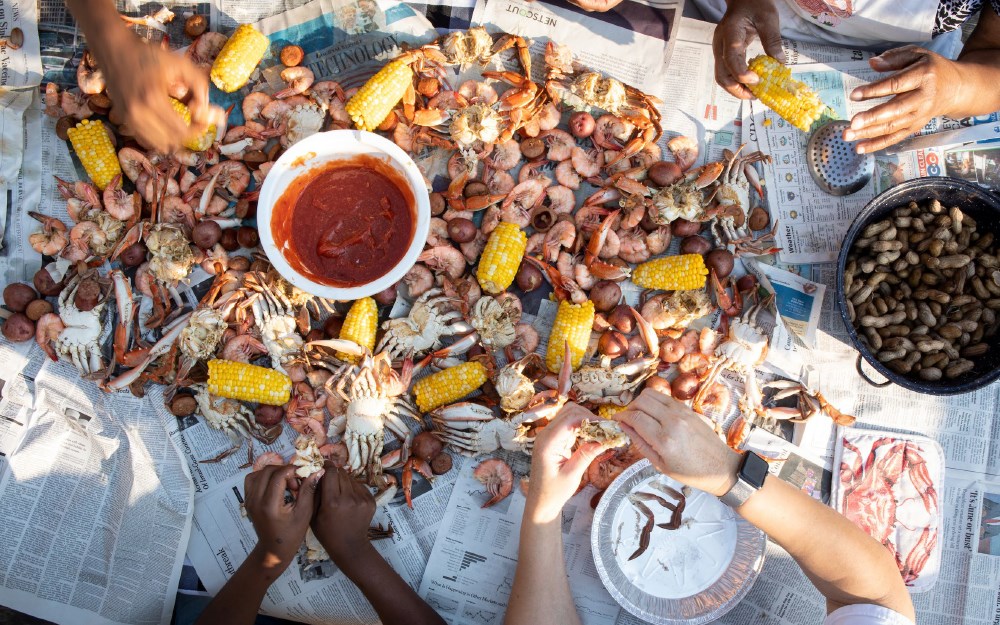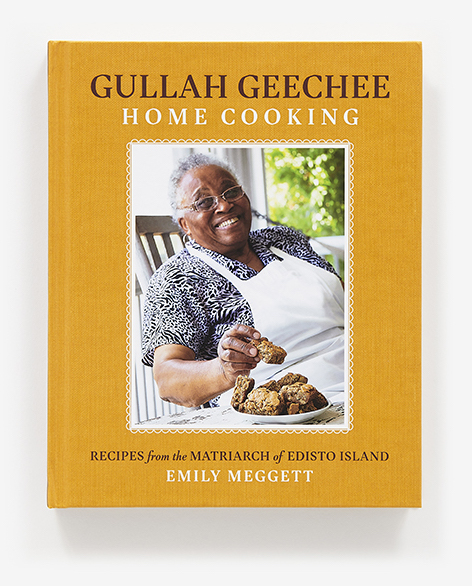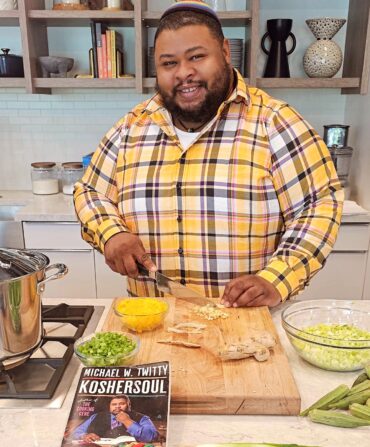Just an hour past the peninsula of Charleston, South Carolina, sits Edisto Island, the home of one of the most important living people in Gullah Geechee food. Emily Meggett has spent her entire life on the Sea Island, and even today at eighty-nine years old, she often cooks out of her kitchen for hundreds of people. After frying shrimp and stirring rice for Edisto Island locals and thousands of visitors over the years, Meggett just released her first cookbook, Gullah Geechee Home Cooking: Recipes from the Matriarch of Edisto Island.
In this beautifully written and photographed book, Meggett serves up Gullah Geechee food across more than one hundred recipes, plus stories of her family’s history on the island dating back to the nineteenth century. Here, Meggett tells a bit about what inspired the cookbook, some of the challenges she faced in the writing process, and why stories about her family home of Edisto were so important to include alongside the recipes—three of which she also shares below.

What led you to create a cookbook?
It all started when my good friend Becky Smith, maybe twenty years ago, inspired me to do this cookbook. Once we started there was no stopping us, we just went on and on. But I don’t ever cook by a recipe. All of it is in my brain, my heart, and my hands. And when you cook with those three, you may deviate and go wrong sometimes, but most of the time you end up successful. The process of creating the cookbook was hard because I never measured anything. So when I got to the place where I had to measure, I had to think about it in my brain—should I use a half a teaspoon or a tablespoon? It took a long time, but we did 123 recipes total, and we only had to add to three of them in the end.
For someone new to Gullah Geechee food, what three recipes would you suggest they try first from your book?
Number one is red rice. Okra soup is next, and then shrimp with grits and gravy. But with the salt pork, now. Don’t forget the salt pork.
Benne cookies are another one. There’s two ways to make them—as benne wafers or benne cookies. The benne wafers are really thin, and the benne cookies have a little rising in them. One of the main differences is in the flour. Use self-rising flour for the cookies, plain flour for the wafers. [Meggett shares her benne cookies recipe here, as well as her she crab soup recipe and fried shrimp recipe. For the rest of her suggestions, find the book here.]
Throughout the book, you talk about your family history. Why was that so important for you to include?
My grandmother was like both my mom and my grandmother, and she taught me all the things that I know about cooking. I also had two uncles that were like daddies to us. There was a whole bunch of us children, but they all taught us the morals of life. And when my children came along, I thought it was important to give them some of the same teachings that my grandmother and my uncles taught us. It’s important for families to pray together so they will stay together.

Why do you feel Edisto is such a special place?
Edisto is special because everybody knows everybody. And there’s a strong community here that takes care of each other and loves each other. As I always say, when you are on the other side of McKinley Washington Jr. Bridge [connecting the mainland to Edisto], you are out in the world. When you cross the bridge, you are in the middle of heaven. And they say heaven is a beautiful place. So, this is Edisto, and Edisto is a beautiful place. Everybody that comes here, they go back and say, “Well, I got to come back to Edisto.” Some places you go you don’t want to come back, but that love and that care and sharing is Edisto. There’s no place in the world like Edisto, no place.
Gullah Geechee Home Cooking: Recipes from the Matriarch of Edisto Island is out now.








